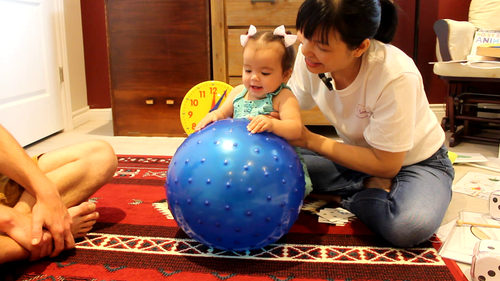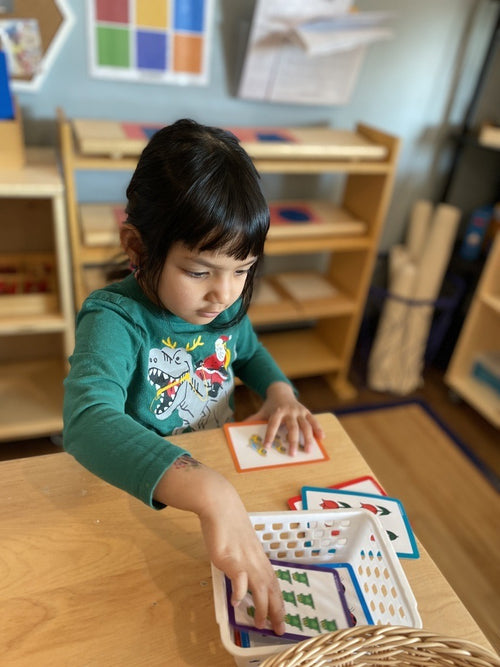How to help your child love learning and hate screens
The Hidden Impact of Screen Time on Toddlers and Preschoolers (Phone/TV/Tablet)
Excessive phone use in young kids affects not only their eyes and posture but also their social and emotional development.
Here’s what the latest research reveals:
-
Reduced Attention Span: When toddlers constantly switch between fast-moving videos, their brains become wired for instant gratification. This makes it harder to focus on slow, real-life tasks like building blocks or listening to a story.
-
Delayed Speech: A study in JAMA Pediatrics found that every additional 30 minutes of screen time per day was linked to a 49% higher risk of speech delay in children under two.
-
Sleep Disruption: The blue light from screens interferes with melatonin production, leading to difficulty falling asleep and shorter rest time.
-
Emotional Outbursts: Young children who spend too much time on screens may struggle to regulate their emotions. They often express frustration, anger, or boredom when the device is taken away.
-
Social Withdrawal: Overreliance on screens can replace playtime with peers, limiting opportunities for developing empathy, cooperation, and imagination.

Why Talk About Screen Time Now?
Across the world, schools are banning cellphones — from France to South Korea, Finland, and Australia — to help students regain focus and improve learning outcomes. In Canada, many educators support these bans, hoping to reduce distractions and increase social interaction in classrooms (CBC News).
But the problem doesn’t start in school.
It starts at home — and often much earlier than we think.
Many children under five already spend hours each day watching videos, playing games, or scrolling through their parents’ phones. The Canadian Paediatric Society recommends that children aged 2–5 years should have less than one hour of screen time per day. Yet studies show that many exceed this limit by three to four times.
So the question is: what happens when toddlers use phones too much — and what can we do about it?
The Root Cause: Why Children Get Addicted to Phones
Understanding the “why” helps parents make lasting changes.
Children become dependent on screens because they stimulate the brain’s reward center. Each video, cartoon, or tap releases dopamine — the same chemical linked to pleasure and addiction.
In real life, dopamine is released more slowly (through hugs, play, or praise). But with phones, the hit is instant and repetitive. That’s why it’s hard for young children to stop watching once they start.
If your toddler throws tantrums when the screen is removed, it’s not disobedience — it’s a biological response to dopamine withdrawal.
How to Set Healthy Screen Time Limits
Limiting screen time for toddlers and preschoolers doesn’t mean banning technology completely. It means using screens with purpose — choosing quality content, setting clear boundaries, and being a role model.

Here are age-based guidelines from pediatric experts:
👶 Under 2 years old
-
Avoid screens completely, except for occasional video calls with family.
-
Babies learn best through real-world interaction — faces, sounds, and touch.
-
Parents should avoid using their phones while feeding or playing with their baby.
👧 Ages 2–3
-
Limit to 30 minutes per day of high-quality, educational videos or songs.
-
Always co-watch and talk about what they see (“What color is that? What animal is this?”).
-
Avoid background TV or phone noise — it reduces play quality and attention.
👦 Ages 3–5
-
Limit to 1 hour per day, focusing on learning-based activities or shows.
-
Use screen time as a shared experience, not a babysitter.
-
Avoid screen use one hour before bedtime to promote healthy sleep.
Data from a large 2016 study found that Canada’s 3- to 4-year-olds were sedentary, on average, for about 60% of their waking time, with an average 2 h taken up by screens. You can read more about age guidelines at the Canadian Paediatric Society.
10 Tips - How to Deal with Phone Addiction in Preschoolers
Here are practical strategies backed by child behavior specialists:
1️⃣ Create a “No-Phone Zone”
Designate spaces where phones are not allowed — bedrooms, dining tables, and cars. This teaches your child that screens have a time and place.
2️⃣ Replace Screens with Sensory Play
Sensory activities like playdough, sand play, water pouring, or puzzles engage the brain naturally. These educational activities for preschoolers stimulate touch, movement, and creativity, helping children stay focused longer without digital stimulation.
Try our blog: Fun Engaging Games to Do at Home with Your Child. In the Waterloo region, families can easily book our Sensory Play session and let us take care of the mess!
3️⃣ Model Healthy Behavior
Children mirror adults. When parents constantly check their phones, children learn that devices are important. Try a “family phone basket” — everyone drops their phone in during mealtime or playtime. When you nurse or breastfeed your child, avoid having phone with you. Use that time to connect and bond with your little ones! They will love you more for that.
4️⃣ Offer Visual and Memory Games
Interactive memory exercises for kids like matching cards, memory grids, or recall games build visual memory and attention span — skills that screens often weaken. Check out our blog about Memory Games here.
5️⃣ Set Consistent Screen Schedules
Children thrive on routine. Instead of saying “No more screen time,” say “We can watch your favorite show after lunch for 20 minutes.” Predictable schedules reduce resistance.
6️⃣ Reward Real-World Engagement
Replace digital rewards with real ones: “When you clean up your toys, we can bake muffins together.” Children need physical experiences to learn cause and effect.
7️⃣ Teach Emotional Regulation
Help your child identify feelings when they crave the phone (“You’re upset because screen time ended — let’s take deep breaths together”). Emotional coaching builds patience and reduces dependency.
8️⃣ Choose Quality Over Quantity
When screen time happens, make it meaningful. Select slow-paced, age-appropriate educational videos (like Sesame Street or Bluey). Avoid YouTube autoplay.
9️⃣ Encourage Outdoor Play
Fresh air, sunlight, and physical activity are the best antidotes to screen fatigue. Even a short walk can reset the brain and release positive energy.
🔟 Join Enrichment Programs
Structured programs like Smartizen’s Whole Brain Training replace passive screen time with interactive learning. Activities such as memory training, music play, and visualization exercises strengthen focus and help children self-regulate — no devices needed.

Preparing Our Kids for The Future
As schools prepare for a future with phone bans, parents can prepare children by teaching self-control and focus early.
The first six years of life are a golden window for brain development. Every sensory experience, memory game, and language exposure helps build neural connections that form the foundation for lifelong learning.
At Smartizen, we help families move from screen dependence to active learning. Through our enrichment programs for toddlers, children learn to focus, imagine, and communicate — the very skills that phones often weaken when overused.
The Takeaway
Reducing screen time for toddlers is not about depriving them; it’s about empowering them.
Your child doesn’t need a phone to learn — they need you, presence, play, and purpose.
By setting clear phone use limits for toddlers and preschoolers and providing enriching, hands-on experiences, you help your child develop curiosity, creativity, and emotional balance — all while preparing them for a tech-heavy world with confidence.








